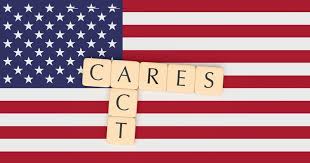
The President recently signed legislation that includes important provisions to help you keep your employees on the payroll during the COVID-19 crisis. These benefits are potentially available to all employers and, in some cases, the federal government will cover many of the costs of continuing to pay your employees for a period of time.
However, these new programs are complicated and there are important choices to make in deciding how to best utilize them. As outlined in more detail here, there are three new ways that you can now get assistance with payroll expenses during this crisis:
Small Business Administration (SBA) Paycheck Protection Loan Program
The biggest change is a new streamlined SBA loan program to provide eligible businesses with cash to meet payroll (including benefits) and other fixed costs (such as rent, interest on mortgages, and utility payments) for up to eight weeks. The maximum loan amount would be 250% of the employer’s average monthly payroll costs, capped at $10 million. The law expands the previous SBA definitions of small employer in a number of ways to increase the availability of these loans, and makes changes in the traditional SBA loan process that should speed-up the process of obtaining a loan. Additionally, after the borrowing business demonstrates that the loan proceeds were actually used to maintain previous payroll or pay those other fixed costs, then the loans (and any interest due) would be eligible for very generous loan forgiveness (and the forgiven amounts would not be taxable). Click here for a guide and checklist on the new loan program from the U.S. Chamber of Commerce.
50% Employee Retention Tax Credit
Another option allows employers (regardless of size) that are uniquely affected by COVID-19 to claim a refundable tax credit against the employer portion of payroll tax equal to 50% of certain wages paid to an employee between March 13, 2020 through the end of the year. Only $10,000 of wages could be taken into account for any employee. This 50% credit would be available to businesses (i) that have had their operations fully or partially suspended by government order due to COVID-19 or (ii) that experienced a 50% decline in gross receipts during a 2020 calendar quarter when compared with the same quarter in 2019.
Social Security Tax Deferral
Another provision that is available to employers of all sizes is the ability to defer the payment of the employer portion of Social Security taxes (6.2% of wages) for the remainder of 2020. Fifty percent of those deferred taxes would have to be repaid by the end of 2021, with the remainder due by the end of 2022.
You Can’t Choose All of the Above
Each of these new alternatives provide very generous tax subsidies to assist employers. But, you’ll still need to make choices.
- If you obtain one of the new SBA loans, you are not eligible for the 50% employee retention tax credit.
- If you have a new SBA loan forgiven, you cannot take advantage of the Social Security tax deferral.
- If you claim the 50% employee retention credit, you will no longer be eligible for an SBA loan.
- If you take advantage of the Social Security tax deferral, you will no longer be eligible to have your SBA loan forgiven.
It is critical that you carefully evaluate your eligibility for and the benefits of each of these options, since the amount of assistance provided by the federal government could vary greatly depending on which path you choose. Right now, we don’t have all the details and are awaiting further guidance from the SBA and IRS.
COVID-19 Paid Leave Requirements Take Effect April 1st
Keep in mind that the new rules requiring most employers to provide paid sick leave and FMLA leave for COVID19-related reasons will go into effect on April 1, 2020. The federal government will reimburse employers for most of those costs through a tax credit, although we are awaiting further guidance on this from the IRS, including information about how the credit may be advanced to employers. Significantly, recent guidance from the U.S. Department of Labor suggests that, if your business closes for any reason, the paid sick leave and expanded FMLA requirements would not apply as of the date your business closes.
On another note, wages paid under these leave provisions prior to April 1 will NOT be eligible for tax credit.
How Do I Apply For Relief?
Visit https://covid19relief.sba.gov/ to investigate your options further. It is HIGHLY recommended that you reach out to your corporate financial institution first to see if they are a SBA approved lender. Because the need of this relief is so desperately needed, lending institutions may prioritize applications for existing customers. Also, work with your corporate accountant regarding qualifications on gross receipt history.
Does Partnering With a PEO Negatively Impact Qualifications for a CARES Loan?
With the recent passage of the Coronavirus Aid, Relief, and Economic Security Act (the CARES Act), many businesses have begun to ask whether contracting for services with a professional employer organization (PEO) will interfere with the business’s ability to qualify for a CARES Act loan, including under the new Paycheck Protection Program. The answer is a resounding “NO!” according to case law, statutory regulations, and statements made by the Small Business Administration (SBA).
MidwestHR will keep you informed of additional information has it becomes available.